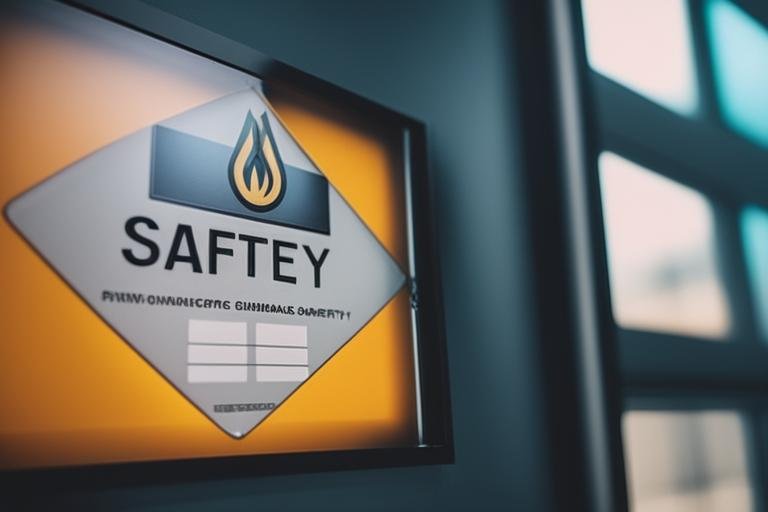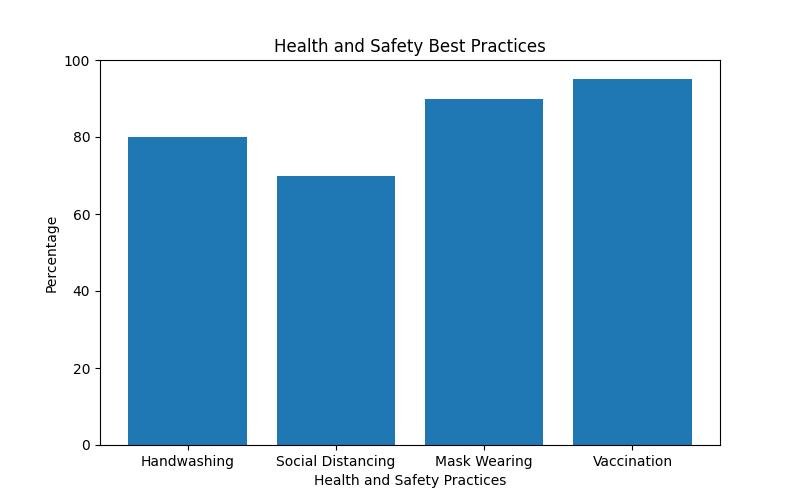Are you looking to prioritize health and safety in your workplace? If so, Cor Certification is an essential program that can help you achieve this goal. In this article, we will provide you with a comprehensive guide to Cor Certifications, including what it is, its importance, obtaining and maintaining it, best practices for health and safety compliance, comparison with other relevant certifications in the field, frequently asked questions, and real-life examples of its significance in promoting workplace safety.
What is Cor Certification?
Cor Certification, or Certificate of Recognition, is a program that recognizes employers who have developed and implemented a health and safety management system that meets established standards. The program aims to reduce the number of workplace accidents and injuries by promoting a culture of safety in the workplace. It is primarily intended for organizations in industries such as construction, oil and gas, and transportation, but it can apply to any organization that wants to improve its health and safety management system.
Cor Certifications: Ensuring Workplace Health and Safety
- COR certification is a recognition program that promotes workplace safety and prevents accidents.
- Organizations can get COR certification by following specific steps and requirements.
- Benefits of COR certification include safer workplaces, improved employee morale, and stakeholder satisfaction.
The Importance of Cor Certification in Health and Safety
Cor Certification promotes workplace safety and prevents accidents and injuries. It indicates that an organization has developed and implemented a health and safety management system that meets established standards. This certification demonstrates an organization’s commitment to promoting a culture of safety in the workplace, which leads to a reduction in the number of workplace accidents and injuries.
Cor Certification also shows an organization’s commitment to providing a safe and healthy work environment for its employees. This commitment can lead to increased employee satisfaction and productivity. It can also help organizations attract and retain talented employees who value health and safety in the workplace.

Obtaining Cor Certification
To obtain Cor Certification, organizations must follow specific steps and meet specific requirements. The first step is to select a certifying partner who will assess the organization’s health and safety management system. The certifying partner will then conduct an audit of the organization’s health and safety management system and provide a report detailing any areas of non-compliance.
Once the organization has received the audit report, it must develop and implement a corrective action plan to address the areas of non-compliance. The certifying partner will then conduct a follow-up audit to assess the organization’s compliance with the corrective action plan. If the organization meets the established standards, it will receive Cor Certification.
Benefits of Cor Certification
There are several benefits of having Cor Certification for organizations, employees, and stakeholders. Cor Certification can help organizations reduce workplace accidents and injuries, which leads to a reduction in costs associated with workplace accidents and injuries, such as lost productivity and increased insurance premiums. It can also help organizations improve their reputation and standing in the community.
For employees, Cor Certification indicates that their employer is committed to providing a safe and healthy work environment. This commitment can lead to increased employee satisfaction and productivity.
For stakeholders, such as customers and investors, Cor Certification indicates that an organization is committed to promoting a culture of safety in the workplace. This commitment can lead to increased confidence in the organization and its products or services.
Maintaining Cor Certification
Maintaining Cor Certification requires continuous improvement of the organization’s health and safety management system. Organizations must conduct regular internal audits and implement corrective actions to address any areas of non-compliance. They must also participate in external audits conducted by the certifying partner to assess the organization’s compliance with the established standards.

Real-life Examples of Cor Certification in Action
Several organizations have obtained Cor Certification and benefited from it in terms of workplace safety and employee satisfaction. For example, the construction company PCL Constructors Westcoast Inc. received Cor Certification and reported a 29% reduction in lost-time claims and a 34% reduction in the total number of claims in the first year. The company also reported increased employee engagement and satisfaction with the company’s health and safety program.
Real-life Case Study: The Impact of Cor Certification on a Manufacturing Company
John is the CEO of a manufacturing company that produces heavy machinery. Over the years, John has had to deal with several workplace accidents and injuries that have not only caused harm to his employees but have also resulted in significant financial losses for the company. John was determined to find a solution to this problem and decided to obtain Cor Certification.
After obtaining Cor Certification, John noticed a significant improvement in the company’s health and safety management system, and the number of accidents and injuries reduced significantly. John attributes this success to the rigorous training and assessment processes required for Cor Certification, which helped identify potential hazards and implement effective controls to mitigate them.
Moreover, John’s employees felt safer and more valued, leading to increased morale and productivity. John also noticed that his company’s reputation improved as a result of obtaining Cor Certification, leading to increased business opportunities and partnerships.
John is now a strong advocate for Cor Certification and encourages other organizations, especially those in the manufacturing industry, to obtain Cor Certification. He believes that Cor Certification is not only an essential requirement for workplace safety but also an investment in the success and growth of an organization.

Best Practices for Health and Safety Compliance
In addition to Cor Certification, several best practices can ensure compliance with health and safety regulations and standards. These practices include developing and implementing a health and safety policy, conducting regular training for employees on health and safety best practices, conducting regular workplace inspections, and maintaining accurate records of health and safety incidents.
Cor Certification vs. Other Health and Safety Certifications
| Certification | Standards | Scope | Requirements | Purpose |
|---|---|---|---|---|
| Cor Certification | Established by the Canadian Federation of Construction Safety Associations (CFCSA) | Primarily for industries such as construction, oil and gas, and transportation, but can apply to any organization that wants to improve its health and safety management system | Development and implementation of a health and safety management system that meets established standards | Recognition of employers who have developed and implemented a health and safety management system that meets established standards |
| ISO 45001 | Developed by the International Organization for Standardization (ISO) | Any organization, regardless of size, industry, or nature of business | Development and implementation of an occupational health and safety management system that meets established standards | Improvement of occupational health and safety performance and protection of employees and other relevant parties |
| OHSAS 18001 | Developed by the British Standards Institution (BSI) | Any organization, regardless of size, industry, or nature of business | Development and implementation of an occupational health and safety management system that meets established standards | Improvement of occupational health and safety performance and protection of employees and other relevant parties |
| CSA Z1000 | Developed by the Canadian Standards Association (CSA) | Any organization, regardless of size, industry, or nature of business | Development and implementation of an occupational health and safety management system that meets established standards | Improvement of occupational health and safety performance and protection of employees and other relevant parties |
Cor Certification is just one of many relevant certifications in the field of health and safety. Other certifications include ISO 45001, OHSAS 18001, and CSA Z1000. While these certifications share some similarities with Cor Certification, they have different requirements and objectives. Organizations should carefully evaluate their options and select the certification that best meets their needs.
Frequently Asked Questions about Cor Certifications
How long does it take to get Cor Certification?
The length of time it takes to obtain Cor Certification depends on several factors, including the size of the organization and the complexity of its health and safety management system. Typically, the process takes several months to a year.
How often do organizations need to renew their Cor Certification?
Organizations need to renew their Cor Certification every three years. The renewal process requires the organization to undergo a recertification audit.
Is Cor Certification recognized outside of Canada?
Cor Certification is primarily a Canadian program, but it is recognized in some other countries, such as the United States and Australia.
Can organizations lose their Cor Certification?
Yes, organizations can lose their Cor Certification if they fail to maintain compliance with the established standards. The certifying partner will conduct regular audits to ensure ongoing compliance.
Conclusion
Cor Certification is a valuable tool for organizations to promote workplace safety and prevent accidents and injuries. It indicates an organization’s commitment to providing a safe and healthy work environment, which leads to increased employee satisfaction and productivity and improved reputation and standing in the community. Organizations that are considering obtaining Cor Certification should carefully evaluate their options and select a certifying partner that meets their needs. By prioritizing health and safety in the workplace, organizations can create a culture of safety that benefits everyone involved.



